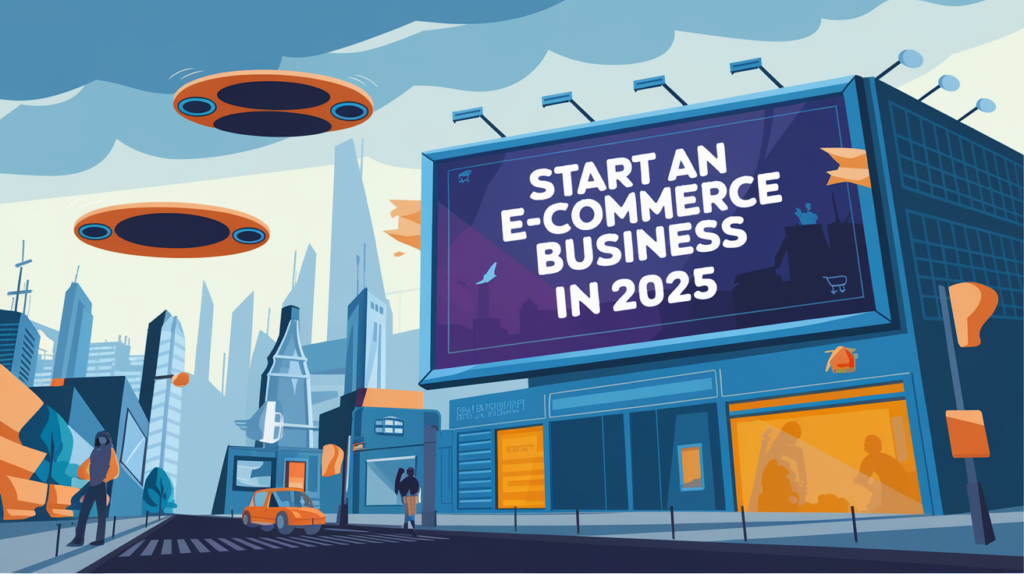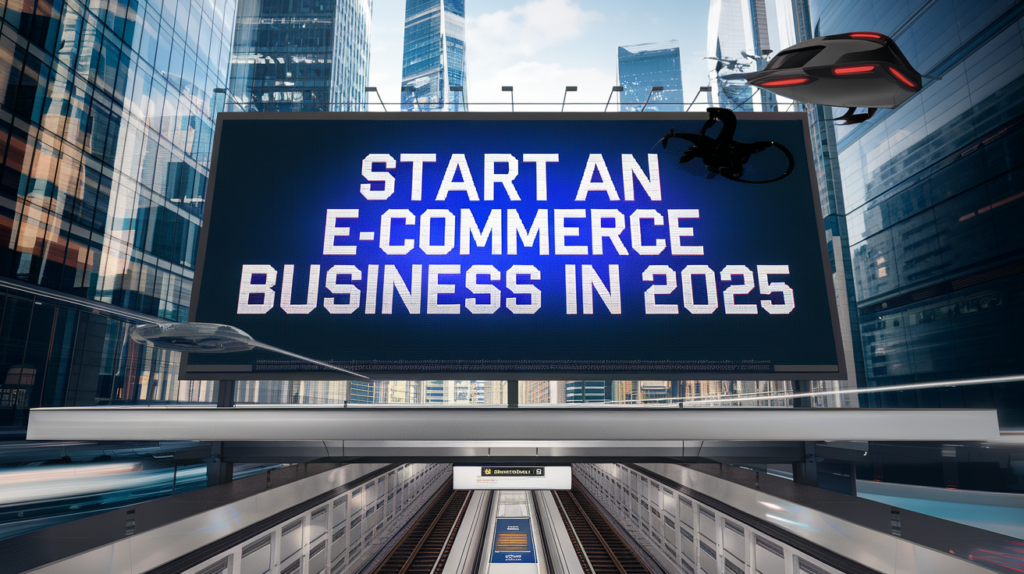The e-commerce industry has been growing at an unprecedented rate, and by 2025, it’s expected to reach new heights with advancements in technology, changing consumer behaviors, and innovative business models. Whether you’re an aspiring entrepreneur or an established business owner looking to expand online, starting an e-commerce business in 2025 offers immense opportunities. However, the landscape will also be more competitive and complex than ever before. This blog post will guide you through the essential steps to launch a successful e-commerce business in 2025, from ideation to execution.
Why Start an E-Commerce Business in 2025?
The global e-commerce market is projected to surpass $7 trillion by 2025, driven by factors like increased internet penetration, mobile shopping, and the rise of emerging markets. Additionally, advancements in artificial intelligence (AI), augmented reality (AR), and blockchain technology will revolutionize how businesses operate and interact with customers.
Starting an e-commerce business in 2025 means you’ll have access to cutting-edge tools and platforms that can help you streamline operations, personalize customer experiences, and scale efficiently. However, success will require careful planning, adaptability, and a deep understanding of the evolving market trends.

Step 1: Identify Your Niche and Target Audience
The first step to starting an e-commerce business is identifying a profitable niche and understanding your target audience. In 2025, consumers will expect highly personalized and niche-specific products and services. Here’s how to find your niche:
- Research Market Trends: Use tools like Google Trends, SEMrush, or social media platforms to identify trending products and industries.
- Analyze Competitors: Study successful e-commerce businesses in your potential niche to understand their strengths and weaknesses.
- Identify Pain Points: Look for gaps in the market or problems that aren’t being adequately addressed by existing businesses.
- Define Your Target Audience: Create detailed buyer personas that include demographics, preferences, and purchasing behaviors.
For example, if you’re passionate about sustainability, you could focus on eco-friendly products like reusable household items or ethically sourced clothing.
MUST REAS:-How to Detect Hidden Cameras in a Hotel Room Using Your Smartphone
Step 2: Choose the Right Business Model
In 2025, e-commerce businesses will have access to a variety of business models, each with its own advantages and challenges. Here are some popular options:
- Dropshipping: A low-risk model where you sell products without holding inventory. When a customer places an order, the product is shipped directly from the supplier.
- Private Labeling: You purchase products from a manufacturer, brand them under your own label, and sell them online.
- Subscription Boxes: Offer curated products on a recurring basis, such as beauty products, snacks, or fitness gear.
- Digital Products: Sell downloadable items like e-books, courses, or software.
- Marketplace Model: Create a platform where multiple sellers can list their products, similar to Amazon or Etsy.
Choose a model that aligns with your goals, budget, and expertise.

Step 3: Build Your Online Store
Your e-commerce website is the foundation of your business. In 2025, consumers will expect fast, seamless, and visually appealing online shopping experiences. Here’s how to build a standout online store:
- Choose an E-Commerce Platform: Platforms like Shopify, WooCommerce, and BigCommerce will continue to dominate in 2025. These platforms offer user-friendly interfaces, customizable templates, and robust features.
- Optimize for Mobile: With mobile shopping on the rise, ensure your website is fully responsive and optimized for smartphones and tablets.
- Incorporate AI and AR: Use AI-powered chatbots for customer support and AR tools to allow customers to visualize products in their own space (e.g., trying on clothes or placing furniture in a room).
- Focus on User Experience (UX): Simplify navigation, ensure fast loading times, and provide clear product descriptions and images.
- Secure Your Website: Implement SSL certificates, two-factor authentication, and other security measures to protect customer data.
Step 4: Source Products and Suppliers
Your product selection and supplier relationships will play a crucial role in your business’s success. In 2025, sustainability and ethical sourcing will be more important than ever. Here’s how to source products:
- Find Reliable Suppliers: Use platforms like Alibaba, Oberlo, or Faire to connect with manufacturers and wholesalers.
- Consider Local Suppliers: Partnering with local suppliers can reduce shipping costs and carbon footprints, appealing to eco-conscious consumers.
- Test Products: Order samples to evaluate product quality before committing to a large inventory.
- Negotiate Terms: Discuss pricing, minimum order quantities, and shipping arrangements with suppliers.
Step 5: Develop a Marketing Strategy
In 2025, e-commerce marketing will be more data-driven and personalized than ever. Here are some strategies to attract and retain customers:

- Leverage Social Media: Platforms like Instagram, TikTok, and Pinterest will remain powerful tools for showcasing products and engaging with customers.
- Invest in Influencer Marketing: Collaborate with influencers who align with your brand to reach a wider audience.
- Use AI-Powered Advertising: Platforms like Google Ads and Facebook Ads will offer advanced targeting options using AI to reach the right audience.
- Focus on Content Marketing: Create valuable content, such as blog posts, videos, and tutorials, to establish your brand as an authority in your niche.
- Implement Email Marketing: Build an email list and send personalized campaigns to nurture leads and drive repeat purchases.
Step 6: Optimize for Search Engines (SEO)
ALSO READ:- How to Create a Business Website Using AI in Astra Theme
Search engine optimization (SEO) will remain a critical component of e-commerce success in 2025. Here’s how to optimize your online store:
- Conduct Keyword Research: Use tools like Ahrefs or SEMrush to identify high-volume, low-competition keywords.
- Optimize Product Pages: Include relevant keywords in product titles, descriptions, and meta tags.
- Build Backlinks: Earn links from reputable websites to improve your site’s authority.
- Focus on Local SEO: If you’re targeting a specific region, optimize for local search terms and list your business on Google My Business.
Step 7: Provide Exceptional Customer Service
In 2025, customer expectations will be higher than ever. Providing exceptional customer service can set your business apart from competitors. Here’s how:

- Offer Multiple Support Channels: Provide live chat, email, and phone support to cater to different customer preferences.
- Use AI Chatbots: Implement chatbots to handle common queries and provide instant responses.
- Streamline Returns and Refunds: Make the return process easy and hassle-free to build trust with customers.
- Personalize Interactions: Use customer data to tailor recommendations and communications.
Step 8: Monitor and Adapt
The e-commerce landscape is constantly evolving, and staying ahead of the curve will require continuous monitoring and adaptation. Here’s how to stay competitive:
- Analyze Data: Use analytics tools to track key metrics like conversion rates, customer acquisition costs, and average order value.
- Stay Updated on Trends: Keep an eye on emerging technologies, consumer behaviors, and industry trends.
- Experiment and Innovate: Test new strategies, products, and marketing tactics to see what works best for your business.
NOTE
Starting an e-commerce business in 2025 is an exciting opportunity to tap into a rapidly growing market. By following these steps—identifying your niche, choosing the right business model, building a user-friendly website, sourcing quality products, and implementing effective marketing strategies—you can set yourself up for success.
However, the key to thriving in the competitive e-commerce landscape of 2025 will be adaptability and innovation. Stay informed about emerging trends, leverage new technologies, and prioritize customer satisfaction to build a sustainable and profitable business. With the right approach, your e-commerce venture can thrive in the dynamic world of online retail. So, take the first step today and start building your e-commerce empire for 2025!


2 thoughts on “How to Start an E-Commerce Business in 2025: A Step-by-Step Guide”